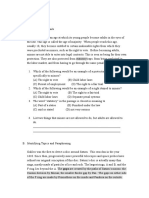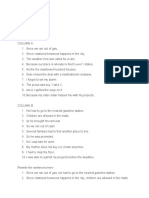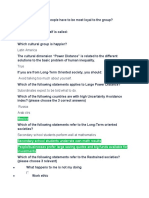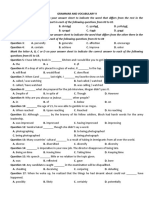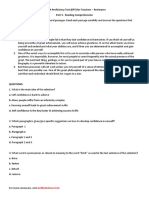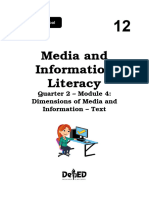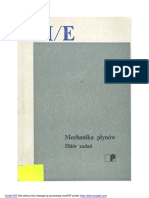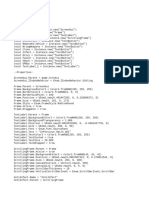0% found this document useful (0 votes)
143 views14 pagesReading Exercises 0425
The passage discusses the decline of the Western Roman Empire in the 5th century AD. It provides several reasons for this decline, including child emperors who relied on regents, as well as greater external threats along the empire's frontiers. The Western Empire faced more permeable borders and exposure to volatile Germanic tribes, while the Eastern Empire had fewer threats and greater cultural unity. The passage also notes the prominence of Germanic generals in the Roman army, which helped maintain military forces but also increased Germanic influence.
Uploaded by
lydianDCopyright
© © All Rights Reserved
We take content rights seriously. If you suspect this is your content, claim it here.
Available Formats
Download as DOCX, PDF, TXT or read online on Scribd
0% found this document useful (0 votes)
143 views14 pagesReading Exercises 0425
The passage discusses the decline of the Western Roman Empire in the 5th century AD. It provides several reasons for this decline, including child emperors who relied on regents, as well as greater external threats along the empire's frontiers. The Western Empire faced more permeable borders and exposure to volatile Germanic tribes, while the Eastern Empire had fewer threats and greater cultural unity. The passage also notes the prominence of Germanic generals in the Roman army, which helped maintain military forces but also increased Germanic influence.
Uploaded by
lydianDCopyright
© © All Rights Reserved
We take content rights seriously. If you suspect this is your content, claim it here.
Available Formats
Download as DOCX, PDF, TXT or read online on Scribd
/ 14






















